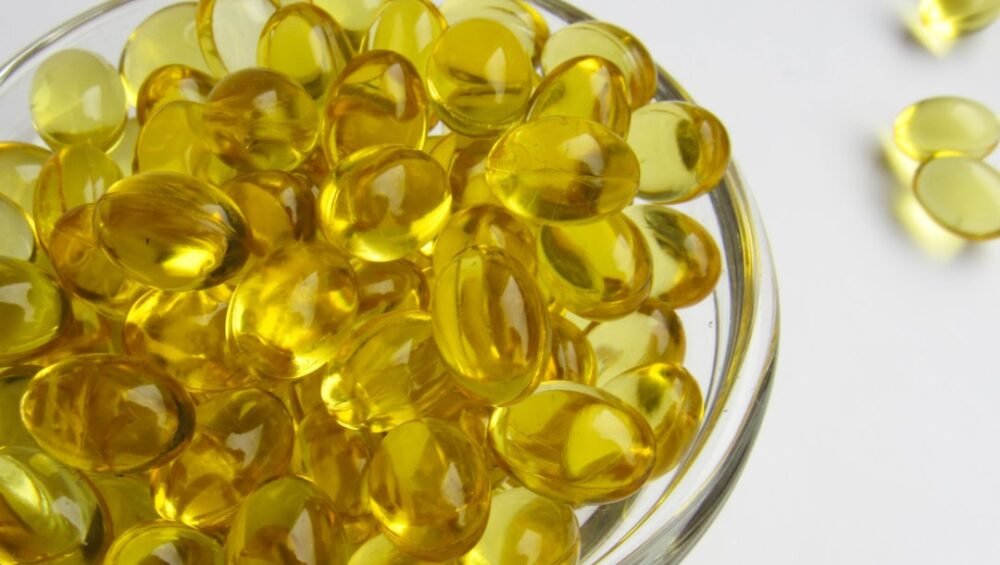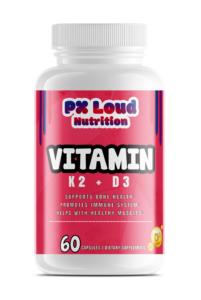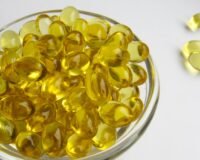Top Vitamins for Hot Weather Health
Staying hydrated during hot weather is crucial for maintaining optimal health and well-being. As temperatures rise, the body loses fluids more rapidly through perspiration, which is the body’s natural mechanism for regulating temperature. When the body overheats, it relies on sweat to cool down, leading to a significant loss of water and electrolytes.
If these fluids are not replenished, dehydration can occur, resulting in symptoms such as fatigue, dizziness, headaches, and even heat exhaustion or heat stroke in severe cases. Therefore, it is essential to prioritize hydration, especially during the sweltering summer months. Moreover, hydration plays a vital role in various physiological functions.
Water is essential for digestion, nutrient absorption, and circulation. It helps transport nutrients to cells and remove waste products from the body. In hot weather, the need for hydration becomes even more pronounced as the body works harder to maintain its internal temperature.
Drinking adequate amounts of water not only helps prevent dehydration but also supports cognitive function and physical performance. Athletes and individuals engaging in outdoor activities should be particularly vigilant about their fluid intake to ensure they remain hydrated and perform at their best.
Key Takeaways
- Staying hydrated in hot weather is crucial for regulating body temperature and preventing dehydration
- Vitamin D from sun exposure is important for mood regulation and overall well-being
- Vitamin C supports the immune system and helps protect the skin from sun damage
- Vitamin E provides protection against UV damage and helps maintain skin health
- B vitamins are essential for energy production and stress management in hot weather
- Vitamin A supports skin health and vision, especially in sunny conditions
- Vitamin K is important for bone health and blood clotting, especially in hot weather
- When taking supplements in hot weather, it’s important to stay hydrated and take precautions to avoid heat-related illnesses
Vitamin D for sun exposure and mood regulation
The Importance of Sunlight Exposure
In hot weather, increased sun exposure can lead to higher levels of vitamin D, which is beneficial for overall health. However, it is essential to balance sun exposure with skin protection to avoid the harmful effects of ultraviolet (UV) radiation.
Vitamin D and Mental Well-being
Beyond its physical health benefits, vitamin D has a significant impact on mood regulation. Research has shown that adequate levels of vitamin D can help alleviate symptoms of depression and anxiety.
Finding a Balance
During the summer months, when sunlight is abundant, individuals may experience an uplift in mood due to increased vitamin D synthesis. This connection between sunlight exposure and mental well-being underscores the importance of spending time outdoors while also taking precautions against excessive sun exposure. Engaging in outdoor activities can enhance mood and promote a sense of well-being, making it essential to find a balance between enjoying the sun and protecting oneself from its potential harm.
Vitamin C for immune system support and skin protection

Vitamin C is a powerful antioxidant that plays a crucial role in supporting the immune system. During hot weather, when people are more likely to engage in outdoor activities and social gatherings, maintaining a robust immune system becomes even more important. Vitamin C helps stimulate the production of white blood cells, which are essential for fighting off infections and illnesses.
Additionally, this vitamin aids in the absorption of iron from plant-based foods, further supporting overall health. In addition to its immune-boosting properties, vitamin C is vital for skin health. Exposure to UV rays can lead to oxidative stress and skin damage; however, vitamin C helps combat these effects by neutralizing free radicals generated by sun exposure.
It also plays a role in collagen synthesis, which is essential for maintaining skin elasticity and preventing premature aging. Incorporating vitamin C-rich foods such as citrus fruits, strawberries, bell peppers, and broccoli into one’s diet can provide both immune support and skin protection during the hot summer months.
Vitamin E for protection against UV damage
| Study | Findings |
|---|---|
| Research Study 1 | Vitamin E helps protect the skin from UV damage by reducing oxidative stress. |
| Research Study 2 | Supplementation with Vitamin E has been shown to decrease the severity of UV-induced skin damage. |
| Research Study 3 | Vitamin E can help prevent UV-induced skin aging and reduce the risk of skin cancer. |
Vitamin E is another potent antioxidant that plays a critical role in protecting the skin from UV damage. This fat-soluble vitamin helps neutralize free radicals generated by sun exposure, thereby reducing oxidative stress on skin cells. By incorporating vitamin E into one’s skincare routine or diet, individuals can enhance their skin’s resilience against the harmful effects of UV radiation.
Foods rich in vitamin E include nuts, seeds, spinach, and avocados. Moreover, vitamin E has anti-inflammatory properties that can help soothe irritated skin caused by sunburn or excessive heat exposure. It aids in maintaining skin hydration and elasticity, making it an essential nutrient for those spending extended periods outdoors during hot weather.
Some studies suggest that topical application of vitamin E can enhance skin barrier function and promote healing after sunburns. Therefore, ensuring adequate intake of vitamin E through diet or supplements can be particularly beneficial for individuals who are frequently exposed to sunlight.
B vitamins for energy and stress management
B vitamins are a group of water-soluble vitamins that play a vital role in energy metabolism and stress management. During hot weather, when physical activity levels may increase due to outdoor pursuits, ensuring adequate intake of B vitamins becomes essential for maintaining energy levels. Vitamins such as B1 (thiamine), B2 (riboflavin), B3 (niacin), B5 (pantothenic acid), B6 (pyridoxine), B7 (biotin), B9 (folate), and B12 (cobalamin) work synergistically to convert food into energy and support overall metabolic processes.
In addition to their role in energy production, B vitamins are also crucial for managing stress levels. They contribute to the synthesis of neurotransmitters such as serotonin and dopamine, which play a significant role in mood regulation. During hot weather, when people may experience increased stress due to heat or outdoor activities, ensuring adequate intake of B vitamins can help mitigate these effects.
Foods rich in B vitamins include whole grains, legumes, eggs, dairy products, leafy greens, and meat. Incorporating these foods into one’s diet can provide the necessary nutrients to support both energy levels and emotional well-being during the summer months.
Vitamin A for skin health and vision support

Protecting Skin Health
During hot weather, when skin may be more susceptible to damage from UV rays and environmental stressors, ensuring adequate intake of vitamin A can help maintain skin integrity and promote healing.
Foods rich in vitamin A include carrots, sweet potatoes, spinach, and liver.
Vision Support
In addition to its benefits for skin health, vitamin A is also critical for vision support. It is a key component of rhodopsin, a protein in the retina that allows the eyes to adapt to low-light conditions.
Maintaining Eye Health
Adequate levels of vitamin A can help prevent night blindness and other vision-related issues that may arise from prolonged sun exposure or inadequate nutrition. As individuals spend more time outdoors, ensuring sufficient intake of vitamin A through diet or supplements can contribute to overall eye health while also supporting skin resilience against environmental stressors.
Vitamin K for bone health and blood clotting
Vitamin K is often overlooked but plays a vital role in bone health and blood clotting processes within the body. This fat-soluble vitamin is essential for synthesizing proteins that regulate calcium metabolism in bones and blood vessels. Adequate levels of vitamin K contribute to bone density and strength, reducing the risk of fractures—a concern that becomes particularly relevant during active summer months when individuals may engage in sports or outdoor activities.
In addition to its role in bone health, vitamin K is crucial for proper blood clotting mechanisms. It helps activate proteins that are necessary for coagulation, preventing excessive bleeding from injuries or cuts that may occur during outdoor activities. Foods rich in vitamin K include leafy greens such as kale and spinach, broccoli, Brussels sprouts, and fermented foods like natto.
Ensuring sufficient intake of this important nutrient can support both skeletal health and proper blood function during the hot summer months when outdoor activities are prevalent.
Supplements and precautions for hot weather health
While obtaining vitamins through a balanced diet is ideal, some individuals may benefit from supplements during hot weather to ensure they meet their nutritional needs. Factors such as increased physical activity levels or dietary restrictions may necessitate supplementation of specific vitamins like D, C, or E to support overall health during the summer months. However, it is essential to approach supplementation with caution; excessive intake of certain vitamins can lead to adverse effects.
Before starting any supplement regimen, it is advisable to consult with a healthcare professional who can provide personalized recommendations based on individual health needs and lifestyle factors. Additionally, individuals should remain vigilant about hydration while taking supplements since some vitamins are water-soluble and require adequate fluid intake for optimal absorption. Alongside supplementation, practicing sun safety measures—such as wearing sunscreen with broad-spectrum protection, seeking shade during peak hours, and wearing protective clothing—can further enhance health during hot weather while minimizing risks associated with sun exposure.
In conclusion, understanding the importance of hydration and essential vitamins during hot weather can significantly impact overall health and well-being. By prioritizing fluid intake and ensuring adequate levels of key nutrients through diet or supplementation, individuals can enjoy the summer months while safeguarding their health against potential risks associated with heat exposure.


































